Celandine, Greater (Chelidonium majus) seeds, organic
Price range: $3.95 through $10.00
Family: Poppy (Papaveraceae)
Hardy to Zones 5 to 8
(Greater Celandine, Celandine Poppy) Short-lived herbaceous perennial native to Europe and temperate Asia. Very comely, with downy stems and lyre-shaped compound leaves, studded in early spring with bright yellow flowers to a height of 20 inches. Traditional usage (TWM): warts, cholagogue, alterative. Low dose botanical. Plant prefers part sun to shade and fast-draining yet moist, woodland or regular garden soil. It volunteers freely and roots very securely into the cinders that make up the pathways in our shadehouses. The seeds germinate best when planted in the shade (dark dependent germinators). Standard greenhouse technique usually gives some results, Plant seeds deeply or set a flat over the planting to exclude light until the seeds germinate. For best results, give a warm/cold/warm stratification. The easiest way to supply this is to plant in the late summer to early autumn to satisfy the warm requirement, allow the planting to overwinter to supply the cold requirement, with germination in the spring as the soils warm. Otherwise, artificial stratification may be attempted. This would be 6 weeks warm (70° F) followed by 8 weeks cold (40° F) followed by germination in warming soils. Easier to spread the seeds in a fertile shady bed in the late summer and expect germ in the spring! Plant grows and prospers in the cooler parts of the year. Space plants 18 inches apart.
Packet contains 50 seeds
1 g contains ~500 seeds
Certified Organically Grown

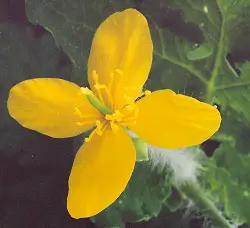
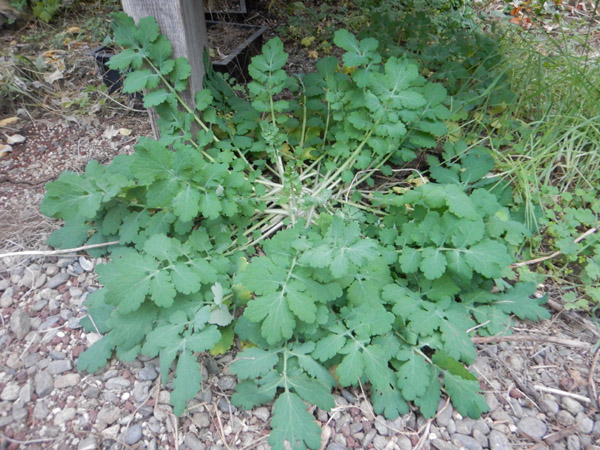
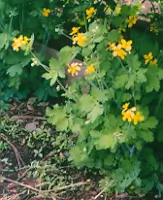
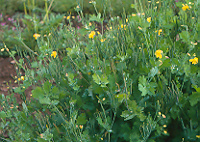
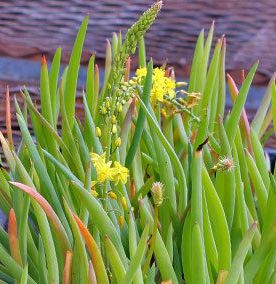
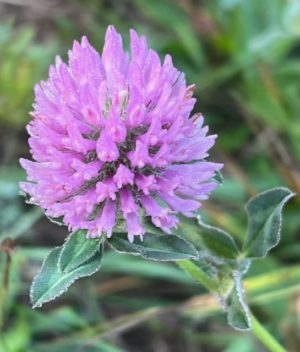
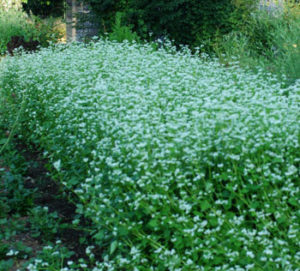
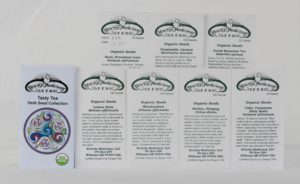
Hasim –
you can throw glasses out with this cute plant.
Video has been removed
Upvote if this was helpful (0) Downvote if this was not helpful (0) Watch Unwatch Flag for removal
daveen (verified owner) –
I live in interior Alaska with a garden likely around zone 3.. and the celandine came back this year after I planted from your seed!!!
Upvote if this was helpful (0) Downvote if this was not helpful (0) Watch Unwatch Flag for removal
Kathryn –
Are the seed pods safe ingested by infusion? Or toxic if one is accidentally infused with say stinging nettles? I have foraging children…
Upvote if this was helpful (0) Downvote if this was not helpful (0) Watch Unwatch Flag for removal
Richo Cech –
The seed pods contain sanguinarine which is acrid–nobody wants to eat these. an accidental inclusion of a bit of celandine with a lot of nettles, in tea form, probably would not be noticeable. r
Upvote if this was helpful (0) Downvote if this was not helpful (0) Flag for removal
LaDonna –
I live in Valdosta Georgia and technically its summer right now. I do have a large shaded area in my backyard. Can I plant them now and how long would they take to bloom and gain roots?
Upvote if this was helpful (0) Downvote if this was not helpful (0) Watch Unwatch Flag for removal
Admin Richo Cech –
Hi LaDonna,
No, the celandine is an early spring plant, it does not do well planted in summer, unless the seed, perhaps, sits in the soil and germinates and grows when the weather cools. r
Upvote if this was helpful (0) Downvote if this was not helpful (0) Flag for removal